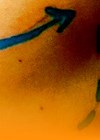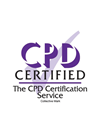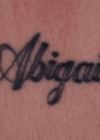Features
An update on BIA-ALCL
The author discusses the concerns and new restrictions on breast implants due to cases of breast implant associated-anaplastic large cell lymphoma – should we be worried? Breast implants, first introduced in the 1960s, have continued to evolve, having survived a...
The importance of teamwork and leadership in the management of patients in burns centres
The authors discuss the vital part teamwork, leadership and communication play in the complex management of burns patients. Teamwork is a group of individuals collaboratively working together in the most efficient and effective manner to achieve a common goal [1,2]....
Focus: Opinions on regulation
Dalvi Humzah Regulation in the aesthetics industry In this issue we have invited commentaries on regulation within aesthetics, in particular the voluntary register set up by the Joint Council for Cosmetic Practitioners (JCCP). Many medical practitioners are concerned regarding the...
Contrasting contemporary plastic surgery training with that in the late 20th century: ‘thirteen years a slave’
The Past Was I a slave? Absolutely not. I loved every minute of my training. I had the choice of career pathway as a young surgeon, but I was hypnotised by enthusiasm and a desire to help people with major...
Immediate versus delayed post mastectomy breast reconstruction
The authors review and analyse the current literature comparing the psychosocial outcomes of immediate versus delayed post mastectomy breast reconstruction. Breast cancer is the most prevalent cancer in women and has a lifetime incidence of one in nine. Mastectomy may...
Genioplasty
With the chin playing a vital part in facial harmony, genioplasty can have a hugely positive impact on patients’ self-esteem and quality of life. The authors share their expertise in the optimal techniques when performing an osseous genioplasty. The perception...
Laser tattoo removal
The authors, experts in dermatologic laser surgery, provide us with a comprehensive review on the use of lasers for tattoo removal. The advanced development in laser devices that can be used for tattoo removal has helped patients and clinicians attain...
When does a non-surgical procedure fall within the scope of CQC registration? An update on cogged PDO thread lifts
In December 2018 the CQC ruled that any healthcare professional performing thread lifting now has to meet its full requirements for surgical procedures. Dr Bea Brookes takes a look at the decision. Non-surgical thread lift with dissolving threads has been...
Melasma treatment – what have we achieved in 42 years?
Melasma is a hyperpigmentation disorder which has been the subject of intense research over the last 40 years. As yet no definitive therapeutic strategy has been demonstrated to eradicate it or to avoid relapse. The author provides an up to...
The truth behind facelift myths
As the number of non-surgical options to treat the ageing face has increased in recent years, so have the number of myths about facelift surgery. This article, from two expert facial plastic surgeons from Stanford Hospital in California, provides the...
The gender affirmation surgery MDT
The authors provide a comprehensive and thought-provoking discussion of the multidisciplinary nature of caring for someone undergoing gender reassignment surgery. In the last 50 years in the UK an estimated 130,000 people have changed their gender assigned at birth (assigned...
What’s new on the horizon for toxins coming to the market?
With the ever increasing demand for injectable treatments, it is important to keep abreast of new developments in the field. International expert Michael Gold reviews the new toxins due to be hitting the market in the next year. We are...














